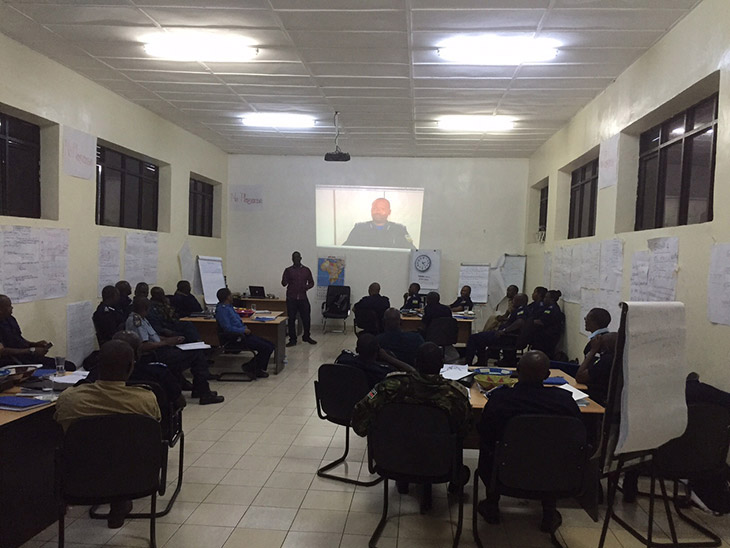Day 7 - SE & Central African Strategic Command Course, Musanze, Rwanda
Advisory Panel Member Roger Gomm says that on day two of the strategic command exercise, we held a short period of reflection on the exercise process, challenges faced so far and learning in the command roles.
It was pleasing to hear that some of the students recognised the need to follow the process that I taught last week and not take action until they had assessed the information.

Debrief of the interviews in the classroom.
Then it was back to the exercise with the students working in their groups as the Gold/Strategic Commander. They continued to receive information and intelligence on various issues within the operation, with ancillary issues arising including drugs supply, corruption and a kidnapping – all designed to test their ability to remain strategic and not delve into a tactical/operational response.
As the day progressed, we concentrated more on the decision logs and what decisions had or had not been recorded for the Gold/Strategic Commander, working on the principle of 'if it's not written down it did not happen'.
The decision recording process we use is:
-
Situation: What is happening, what are the impacts, what are the risks, what might happen and what is being done about it? Having situational awareness is having an appropriate knowledge of these factors.
-
Options: what options are available?Decision and Rationale: importantly the reason why an option has been selected and not others.
In the afternoon the groups are required to develop a media strategy and one student from each group is interviewed by a local journalist, Raymond. It is his third visit to the course and although he asked several difficult questions, the experience was enjoyed. At the end of the interviews the exercise concluded with a short input from Raymond on how to work with the media.
Various forms of transport used by the locals in Muzanze
By far the most popular form of transport is walking, with locals walking several miles to and from the town, usually for the market, carrying heavy loads of produce in each direction. On average, school children and teachers walk five kilometres to school and back home at the end of the day, an hour each way. There are no queues of cars outside the local schools!
Two wheels are next popular, both bicycles and motorbike taxis a constant sight on the roads. Solid framed bicycles adapted with a seat for a passenger or load, are seen with all sorts of produce being transported to and from town. The motorbike is the basic cheap taxi in town. The drivers carry a second helmet for the passenger.
This is followed by the local bus service that I have shown last week alongside the musungo trap!
Roger Gomm, CRJ Editorial Advisory Panel
Roger Gomm, 05/05/2015